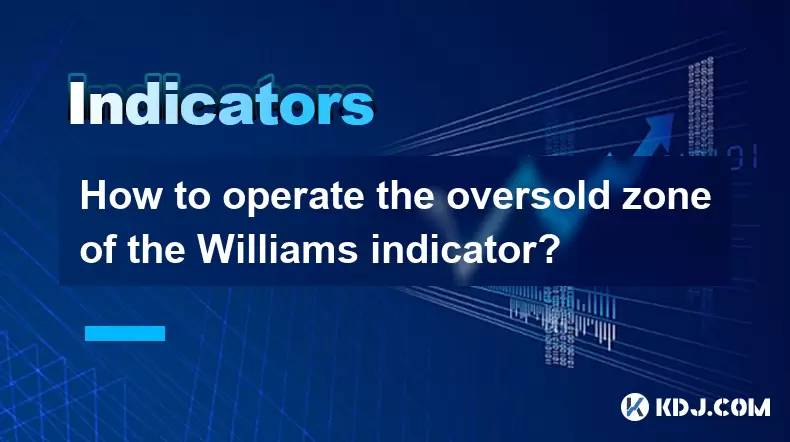-
 Bitcoin
Bitcoin $108,092.5658
-0.99% -
 Ethereum
Ethereum $2,546.4530
-1.12% -
 Tether USDt
Tether USDt $1.0000
0.01% -
 XRP
XRP $2.2676
0.12% -
 BNB
BNB $659.1616
-0.30% -
 Solana
Solana $148.8297
-1.97% -
 USDC
USDC $1.0000
0.02% -
 TRON
TRON $0.2874
-0.30% -
 Dogecoin
Dogecoin $0.1676
-3.64% -
 Cardano
Cardano $0.5765
-1.73% -
 Hyperliquid
Hyperliquid $37.2069
-6.18% -
 Bitcoin Cash
Bitcoin Cash $497.9918
-0.10% -
 Sui
Sui $2.8427
-2.26% -
 Chainlink
Chainlink $13.2689
-2.06% -
 UNUS SED LEO
UNUS SED LEO $9.0541
0.15% -
 Stellar
Stellar $0.2487
-0.92% -
 Avalanche
Avalanche $17.7710
-3.09% -
 Shiba Inu
Shiba Inu $0.0...01167
-1.28% -
 Toncoin
Toncoin $2.7488
-2.80% -
 Hedera
Hedera $0.1559
-2.28% -
 Litecoin
Litecoin $85.8945
-2.48% -
 Monero
Monero $316.0985
-2.09% -
 Dai
Dai $1.0001
0.02% -
 Polkadot
Polkadot $3.3481
-1.83% -
 Ethena USDe
Ethena USDe $1.0000
0.00% -
 Bitget Token
Bitget Token $4.2910
-3.04% -
 Uniswap
Uniswap $7.4131
-0.09% -
 Aave
Aave $280.9266
-2.67% -
 Pepe
Pepe $0.0...09816
-3.18% -
 Pi
Pi $0.4557
-2.29%
How to operate the oversold zone of the Williams indicator?
Jun 30, 2025 at 09:14 am

Understanding the Williams %R Indicator
The Williams %R indicator, often referred to as Williams Percent Range, is a momentum oscillator used in technical analysis. It helps traders identify overbought and oversold conditions in the market. The indicator ranges from 0 to -100, with values above -20 considered overbought and values below -80 considered oversold. In cryptocurrency trading, where volatility is high, understanding how to interpret and act on these levels can be crucial.
When the price of a digital asset falls into the oversold zone, it may signal that the asset has been excessively sold off and could potentially rebound. However, relying solely on this reading without additional confirmation can lead to misleading signals.
Identifying Oversold Conditions in Cryptocurrency Markets
In the context of cryptocurrencies like Bitcoin or Ethereum, the oversold zone appears when the Williams %R drops below -80. This level suggests that the downward pressure might be exhausted and a reversal could be imminent. However, due to the highly volatile nature of crypto markets, an asset can remain in the oversold zone for extended periods during strong downtrends.
Traders should not treat this as an automatic buy signal but rather as a potential opportunity. It’s important to cross-reference this with other tools such as moving averages, volume indicators, or support/resistance levels to confirm whether a reversal is likely. For example, if the price is approaching a key support level while the Williams %R is in the oversold zone, it may indicate a stronger probability of a bounce.
How to Use the Williams %R Indicator in Trading Platforms
Most modern trading platforms, including TradingView, Binance, or MetaTrader 4/5, come with built-in technical indicators, including the Williams %R. To apply it:
- Open your preferred trading platform
- Select the cryptocurrency pair you want to analyze
- Click on the "Indicators" tab or search bar
- Type “Williams %R” and add it to the chart
Once applied, the default period is usually set to 14, which means the indicator calculates the closing price relative to the highest high and lowest low over the past 14 periods (e.g., 14 hours, days, or weeks). You can adjust this setting based on your trading style—short-term traders may use lower periods, while long-term investors may opt for higher ones.
It’s also possible to customize the color and threshold lines to highlight the oversold (-80) and overbought (-20) zones more clearly on your chart.
Entering Trades When Williams %R Is in the Oversold Zone
If the Williams %R enters the oversold zone, here are steps to consider before entering a trade:
- Look for bullish candlestick patterns: A hammer, inverted hammer, or engulfing pattern near the oversold level can increase the likelihood of a reversal.
- Check for divergence: If the price makes a new low but the Williams %R does not, this bullish divergence may suggest weakening selling pressure.
- Confirm with volume: An increase in volume during or after the oversold reading may indicate that buyers are stepping in.
- Use trendlines or moving averages: If the price is bouncing off a key moving average (like the 50 EMA) while the indicator is in the oversold zone, it may provide a better entry point.
Some traders wait for the Williams %R to rise back above -80 before taking action, treating it as a confirmation that the downward momentum has started to reverse.
Managing Risk When Trading Oversold Signals
Trading based on oversold readings comes with risks, especially in trending markets. Here are some risk management strategies to implement:
- Set stop-loss orders: Place a stop-loss below the recent swing low to protect against further downside if the expected reversal doesn’t occur.
- Limit position size: Since false signals can happen frequently, only allocate a small portion of your portfolio to each trade.
- Avoid trading against the trend: In a strong bearish trend, even if the indicator shows oversold conditions, the price may continue to fall.
- Combine with other tools: Using complementary indicators like RSI or MACD can help filter out weak signals and reduce emotional decision-making.
Remember, the oversold zone does not guarantee a reversal—it merely indicates that short-term selling pressure may be diminishing.
Frequently Asked Questions
What time frame is best for using the Williams %R in crypto trading?
While the 14-period setting is standard, many traders adjust the time frame depending on their strategy. Short-term traders may prefer 5-minute or 15-minute charts, while swing traders might use daily or weekly charts. Always test different settings and time frames before live trading.
Can the Williams %R be used alone for making trades?
Although the Williams %R provides valuable insights, it's generally not recommended to use it in isolation. Combining it with other tools like volume, moving averages, or candlestick patterns improves accuracy and reduces false signals.
Is the oversold zone more reliable in certain cryptocurrencies?
No single cryptocurrency guarantees better performance with any indicator. However, major coins like Bitcoin and Ethereum tend to have more predictable patterns due to higher liquidity and trading volume compared to smaller altcoins.
How often does the Williams %R give false signals in crypto markets?
False signals are common, especially during strong trends or news-driven volatility. Traders should always use additional filters to validate what the indicator suggests and avoid acting on a single signal.
Clause de non-responsabilité:info@kdj.com
Les informations fournies ne constituent pas des conseils commerciaux. kdj.com n’assume aucune responsabilité pour les investissements effectués sur la base des informations fournies dans cet article. Les crypto-monnaies sont très volatiles et il est fortement recommandé d’investir avec prudence après une recherche approfondie!
Si vous pensez que le contenu utilisé sur ce site Web porte atteinte à vos droits d’auteur, veuillez nous contacter immédiatement (info@kdj.com) et nous le supprimerons dans les plus brefs délais.
-
 ICNT Échangez maintenant
ICNT Échangez maintenant$0.3182
30.31%
-
 M Échangez maintenant
M Échangez maintenant$0.2011
23.43%
-
 SOLO Échangez maintenant
SOLO Échangez maintenant$0.3788
17.55%
-
 HSK Échangez maintenant
HSK Échangez maintenant$0.7010
17.49%
-
 SHX Échangez maintenant
SHX Échangez maintenant$0.0116
15.42%
-
 COREUM Échangez maintenant
COREUM Échangez maintenant$0.1392
8.59%
- Bitcoin Solaris Market Launch: A New Dawn or Just Another Altcoin?
- 2025-07-08 20:30:12
- Bitcoin, Memecoin Mania, and the All-Time High Hunt: What's Next?
- 2025-07-08 20:30:12
- Byrq Coin: Scam or Savior? A Deep Dive Review
- 2025-07-08 20:50:12
- Shiba Inu's Burn Rate Bonanza: Can Crypto Burns Ignite a Price Rally?
- 2025-07-08 20:50:12
- Telekom, injectif et validateurs: une plongée profonde dans la sécurité et la croissance du réseau
- 2025-07-08 21:10:12
- ROM: Golden Age - un demi-million de pré-registrations et un butin crypto!
- 2025-07-08 21:15:12
Connaissances connexes

How to trade Dogecoin based on funding rates and open interest
Jul 07,2025 at 02:49am
<h3>Understanding Funding Rates in Dogecoin Trading</h3><p>Funding rates are periodic payments made to either long or short traders ...

What is the 'God Mode' indicator for Dogecoin
Jul 07,2025 at 04:42pm
<h3>Understanding the 'God Mode' Indicator</h3><p>The 'God Mode' indicator is a term that has emerged within cryptocurrency trading ...

Using Gann Fans on the Dogecoin price chart
Jul 07,2025 at 09:43pm
<h3>Understanding Gann Fans and Their Relevance in Cryptocurrency Trading</h3><p>Gann Fans are a technical analysis tool developed b...

How to spot manipulation on the Dogecoin chart
Jul 06,2025 at 12:35pm
<h3>Understanding the Basics of Chart Manipulation</h3><p>Chart manipulation in the cryptocurrency space, particularly with Dogecoin...

Dogecoin market structure break explained
Jul 07,2025 at 02:51am
<h3>Understanding the Dogecoin Market Structure</h3><p>Dogecoin, initially created as a meme-based cryptocurrency, has evolved into ...

How to backtest a Dogecoin moving average strategy
Jul 08,2025 at 04:50am
<h3>What is a Moving Average Strategy in Cryptocurrency Trading?</h3><p>A moving average strategy is one of the most commonly used t...

How to trade Dogecoin based on funding rates and open interest
Jul 07,2025 at 02:49am
<h3>Understanding Funding Rates in Dogecoin Trading</h3><p>Funding rates are periodic payments made to either long or short traders ...

What is the 'God Mode' indicator for Dogecoin
Jul 07,2025 at 04:42pm
<h3>Understanding the 'God Mode' Indicator</h3><p>The 'God Mode' indicator is a term that has emerged within cryptocurrency trading ...

Using Gann Fans on the Dogecoin price chart
Jul 07,2025 at 09:43pm
<h3>Understanding Gann Fans and Their Relevance in Cryptocurrency Trading</h3><p>Gann Fans are a technical analysis tool developed b...

How to spot manipulation on the Dogecoin chart
Jul 06,2025 at 12:35pm
<h3>Understanding the Basics of Chart Manipulation</h3><p>Chart manipulation in the cryptocurrency space, particularly with Dogecoin...

Dogecoin market structure break explained
Jul 07,2025 at 02:51am
<h3>Understanding the Dogecoin Market Structure</h3><p>Dogecoin, initially created as a meme-based cryptocurrency, has evolved into ...

How to backtest a Dogecoin moving average strategy
Jul 08,2025 at 04:50am
<h3>What is a Moving Average Strategy in Cryptocurrency Trading?</h3><p>A moving average strategy is one of the most commonly used t...
Voir tous les articles

























































































